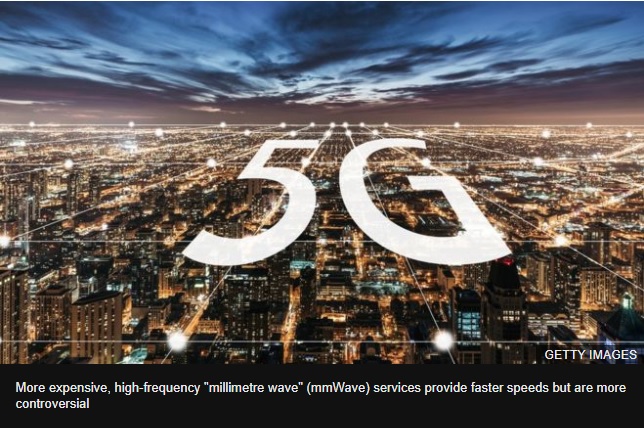
A fight over access to radio-wave frequencies for 5G mobile data is coming to a head as officials decide how wavelengths should be allocated.
The European Space Agency has warned opening up the airwaves will harm climate change research and make weather forecasting more difficult.
But a mobile industry group says these claims are "unfounded" and will limit networks' ability to offer fast speeds.
Ministers and regulators are meeting in Egypt to discuss the options.
More capacity
The World Radiocommunication Conference 2019 (WRC-19) in Sharm el-Sheikh will attempt to find a global agreement on how 5G airwaves should be used.
Launched in the UK this year, 5G enables users to download films over the internet in seconds rather than minutes.
UK media watchdog Ofcom said on Monday it would auction more sub-6GHz (gigahertz) low- and mid-level airwaves next year to boost coverage and support the rollout of 5G services.
But higher-level "millimetre wave" (mmWave) frequencies offer the scope to provide further 5G capacity.
In May, the European Union said some of these high-frequency airwaves should be released by member states before the end of 2020 to facilitate the 5G rollout.
Experts say these airwaves could help avoid the high-speed service being swamped by demand, thus ensuring the smooth running of data-hungry applications, including those that power autonomous vehicles and augmented reality apps.
However, meteorologists have warned if too much bandwidth is provided, it could cause interference with the equipment they use to predict hurricanes and other weather patterns. So, they want a narrower range of mmWave frequencies to be offered than mobile networks would like.
Fiona Vanier, a senior analyst at CCS Insight, said: "Meteorologists are concerned that radio frequencies such as 23.8GHz [at the beginning of the mmWave zone] contaminate Earth observations such as water-vapour detection."

